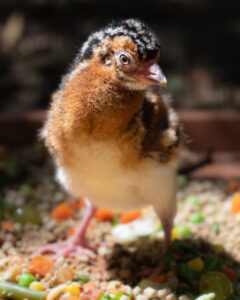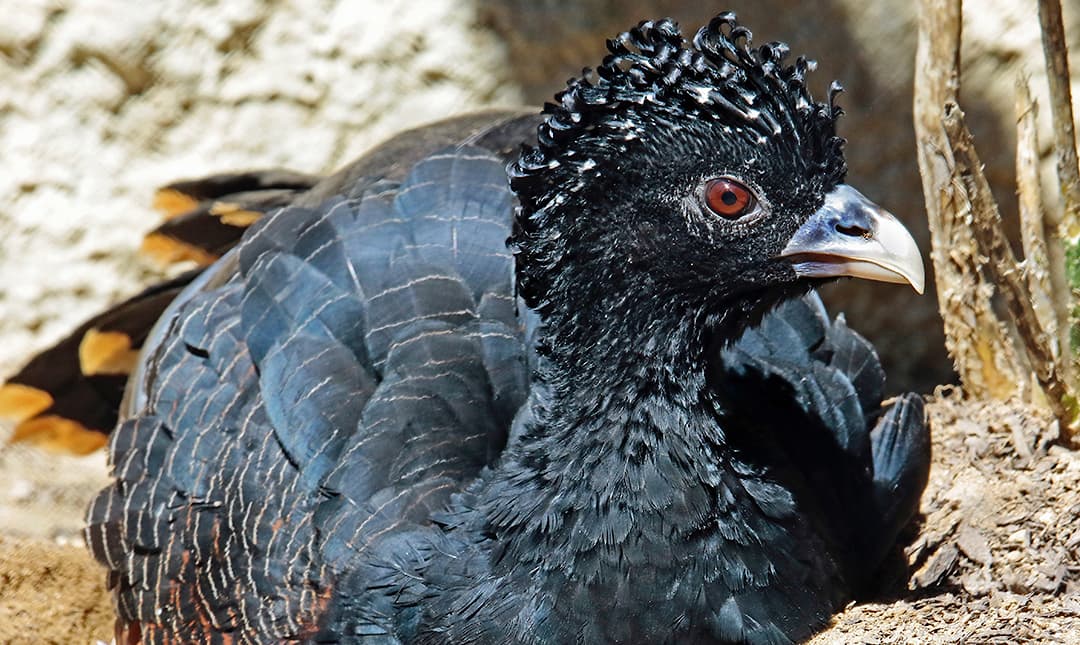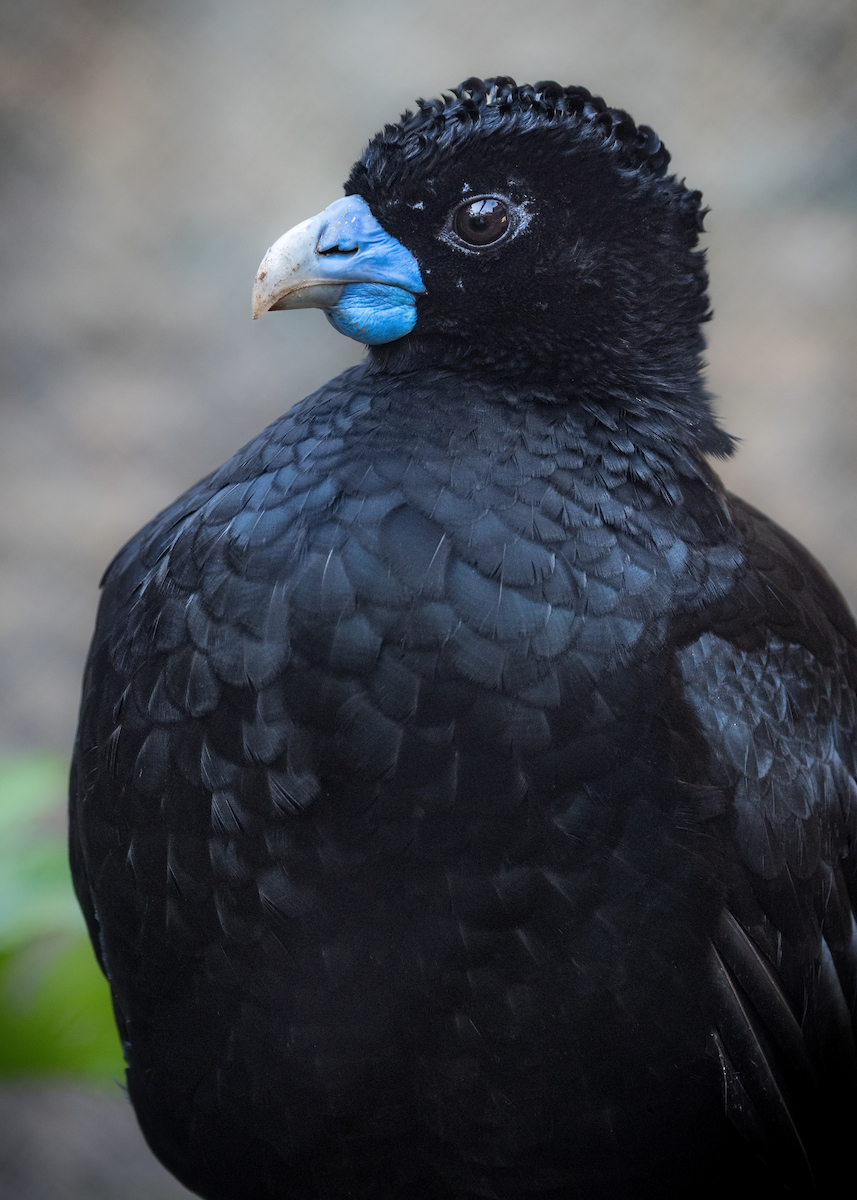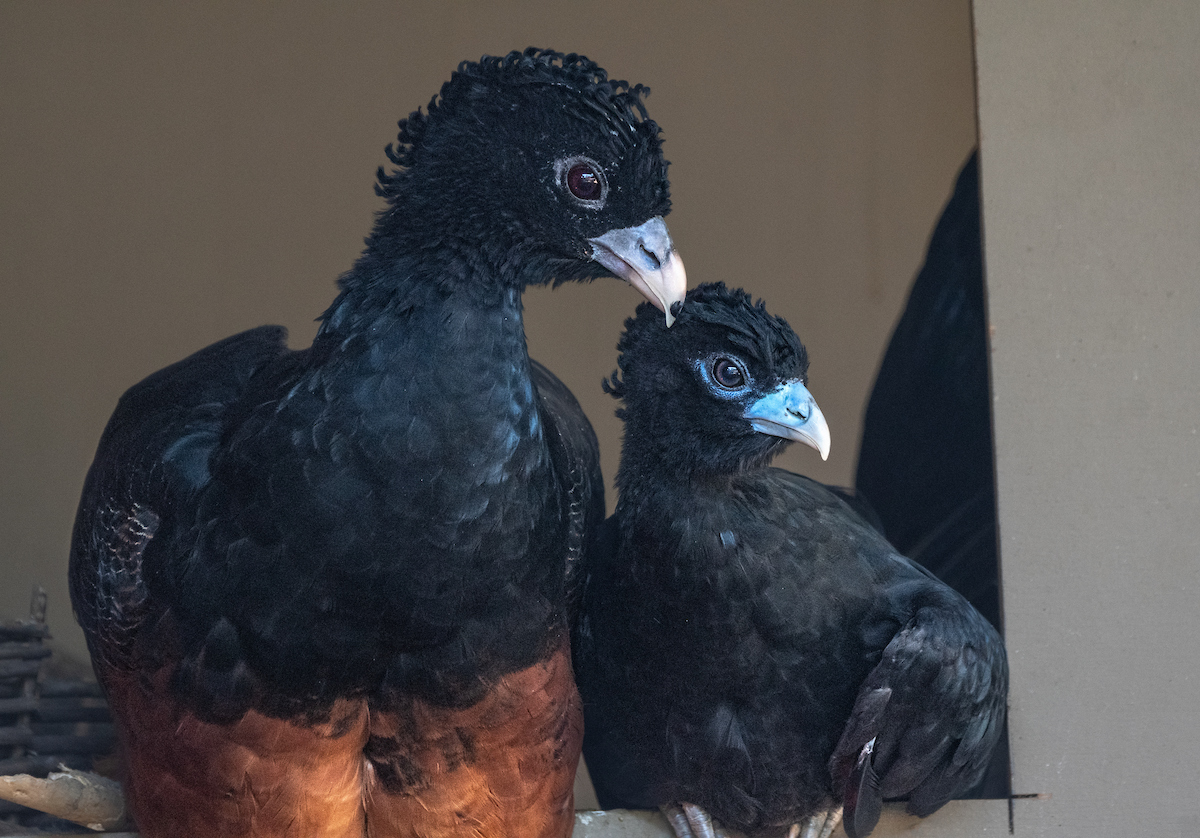About
The blue-billed curassow is a tropical South American cousin of the turkey. It is one of the rarest birds in the world, critically endangered in part because both the birds and their eggs are hunted for food. Curassows belong to an ancient family of primitive birds originating in Central and South America 40–50 million years ago. This bird is named for the baby-blue, fleshy covering at the base of its beak and the small blue wattles on males. Males also have an impressive mass of curly feathers on their heads.
Curassows are large forest birds that feed mainly on the ground, hunting for seeds, fruit, leaves, and insects. Their long legs and strong feet are used for scratching and digging in a manner similar to that of chickens. However, an elongated back toe allows them to perch in trees where they flee when threatened. They roost in trees at night. Curassows are gregarious and feed in pairs or family groups. Feather maintenance takes up a large part of the day. The birds preen, sunbathe, and take dust baths to rid themselves of parasites and keep their feathers healthy. Blue-billed curassows do not migrate, but they may move to follow food and water sources during the wet and dry seasons.
Blue-billed curassows are mostly monogamous and form strong pair bonds. Courtship can include song, dance, and dinner. The male puffs out his feathers and displays while producing a low-pitched booming. Males may present a food offering to the females. The nest, constructed by the male, is a flat cushion of branches, twigs, and leaves built off the ground. The female incubates two or three eggs for about a month. Both parents care for the chicks. Chicks are soon independent but remain near their parents for several months.
Inhabiting only a very small region of northern Colombia, blue-billed curassow numbers are declining rapidly due to pesticide use and destruction of native rainforest. The population is estimated at between 250 and 1,000 birds.



HABITAT
Blue-billed curassows inhabit grasslands, marshes, and meadows near lakes and streams in Colombia, South America.
DIET
This omnivorous bird eats fruits, shoots, small invertebrates, and, possibly, carrion. It plays an important role as a seed disperser.
PHYSICAL CHARACTERISTICS
Height is between two and three feet; weight is between seven and eight pounds. Males are larger than females, and their lifespan averages more than 20 years.
location within the zoo
You’ll find this bird in the South America section. See Zoo Map.




